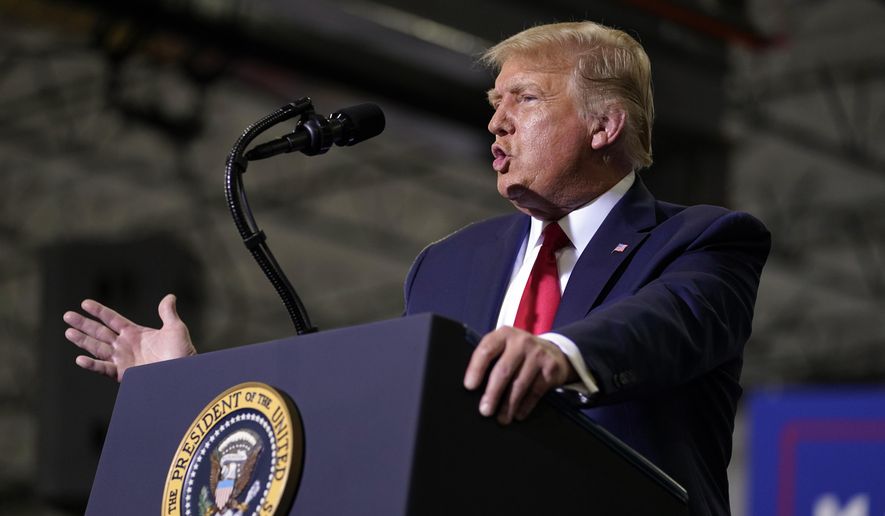OPINION:
Despite President Trump’s steady and durable deficit in nationwide surveys, a closer look at the Electoral College map indicates that his pathways to victory remain open.
At this point in the campaign, there are only a handful of states that are truly up for grabs. To simplify, let’s assume that the president is, for the most part, going to win where he won in 2016 and where he currently holds a narrow lead — Georgia, Texas and Iowa.
Let’s also assume that Mr. Trump will win Florida, which has been drifting back into his column for a few months. Similarly, let’s assume that Mr. Biden will win all the states won by Hillary Clinton in 2016, as well as one state — Arizona — won by Mr. Trump in 2016 but which has been moving steadily away from him for the last 60 days and in which the ticket is being damaged by Sen. Martha McSally’s listless effort against Mark Kelly.
Since Mr. Trump received 306 electoral votes in 2016, he can afford to lose 36 votes this time (25 if Arizona flips) and still be re-elected. To refresh the memory, in 2016 Mr. Trump won in each of the remaining contested states — Pennsylvania (20 electoral votes), Michigan (16), North Carolina (15) and Wisconsin (10).
To return to the White House, Mr. Trump needs to win in Pennsylvania (again) and win in either Michigan or North Carolina, and win in Wisconsin or Minnesota. Another, less likely path, is to win in Michigan, North Carolina, and Wisconsin in the event he loses Pennsylvania.
Mr. Biden needs either to flip Pennsylvania and one among Michigan, North Carolina, or Wisconsin, or, in the event he loses Pennsylvania, he needs to win Michigan and North Carolina. In all events, Mr. Biden needs to hold onto Minnesota.
There are other scenarios involving New Hampshire and Nevada, but their probability is small and getting smaller.
Pennsylvania is the key to the election. If Mr. Trump loses it, he won’t win. If Mr. Biden loses it, he needs to draw to an inside straight and win Michigan and either North Carolina or Wisconsin, and hold onto Minnesota. That pattern of victories is unlikely.
The good news for Mr. Biden is that he currently holds leads in all of the contested states.
In Pennsylvania, his average lead in the “poll of polls” at Real Clear Politics is 4.3 percentage points, although Mr. Trump has tied him in a recent survey. Also, it is probably wise not to get too excited about the idea of Republicans out-registering Democrats in the last 18 months or so in Pennsylvania. The Democrats still have a registration advantage of 750,000 in the commonwealth.
In Michigan, Mr. Biden’s average lead is 4.2 percentage points, but a survey conducted in mid-August had Mr. Trump leading by 2 points. In Wisconsin, Mr. Biden’s average lead is 6.7 percentage points. In Minnesota, Mr. Biden’s average lead has bounced around a bit, but is in the high single digits.
North Carolina is very close, with the candidates trading the lead for much of the last three months, and the state is also host to very tight gubernatorial and U.S. Senate races.
As the campaign careens towards its denouement, the campaigns themselves will tell us what they think about the competition in various places by where they deploy the candidate and surrogates and spend donor money.
The Biden team is likely to focus on Pennsylvania, probably to the exclusion of other states. The Trump team will spend time in Pennsylvania, but also in North Carolina, Wisconsin and Minnesota.
Election Day is just a little more than six weeks from now, so these final decisions about where to spend time and money will decide the outcome.
• Michael McKenna, a columnist for The Washington Times, is the president of MWR Strategies. He was most recently a deputy assistant to the president and deputy director of the Office of Legislative Affairs at the White House.




Please read our comment policy before commenting.